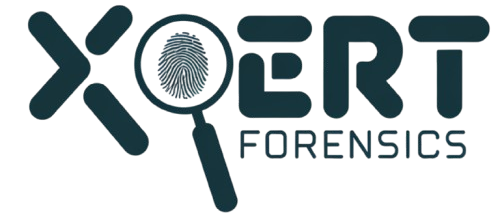Case Studies
Explore our confidential case studies where Xpert Forensics uncovered digital fraud, insider threats, data leaks, and cyber misconduct using advanced forensic tools and investigative techniques. Each case reflects our commitment to precision, discretion, and delivering actionable insights that drive resolution.
Deepfake or Original? How We Verified a Suspected Image
Introduction: The Rising Need for Image Authenticity Verification
In today’s digital landscape, the rise of AI-generated deepfakes poses a serious threat to truth, security, and reputation. Whether you’re in corporate security, cybercrime investigation, or academia, the ability to verify if an image is real or fake has become a critical skill.
At Xpert Forensics, we specialize in advanced image authentication services. This post presents a real-world case study where we were asked to determine whether an image was a deepfake or a genuine photograph.
Case Background: The Client & Their Concern
A client reached out to us through a freelancing platform with a simple but urgent request:
“Can you analyze this image and confirm if it’s real or AI-generated?”
The image in question was part of documentation submitted to an insurance company as part of a damage claim (accident). The insurance firm had doubts due to some visual inconsistencies, but no technical proof of tampering. The client needed a forensic expert to confirm or deny any manipulation before proceeding with legal or financial steps.
Our Forensic Image Analysis Workflow
To ensure a thorough and defensible investigation, we followed a multi-layered forensic workflow:
1. Metadata Analysis
We used ExifTool to extract and analyze the image’s metadata. This allowed us to check:
- Camera make and model
- Timestamps
- Editing software (if any)
Result: The image contained metadata from a Canon camera, with no signs of modification tools like Photoshop or AI generators such as Midjourney, DALL·E, or Firefly.
2. Error Level Analysis (ELA)
Next, we used FotoForensics to conduct ELA — a method used to highlight inconsistent compression levels that could indicate tampering.
Result: ELA output showed consistent compression across the image. No abnormalities, layering, or patchwork tampering was detected.
3. Pixel-by-Pixel RGB Inspection
We zoomed into various sections of the image and inspected RGB color values at the pixel level.
Result: The transitions between pixels were smooth and natural. No blending, shadow mismatches, or edge distortions — common indicators of AI-generated content — were present.
4. AI-Based Deepfake Detection
To back up our manual analysis, we ran the image through:
- Deepware Scanner
- Sensity AI
Result: The image scored only 4.2% likelihood of being synthetic. This is well below the threshold for concern in forensic deepfake evaluations.
5. Noise Pattern & Clone Detection
We used Forensics to examine the image’s noise distribution and repeated pattern structures.
Result: The image exhibited natural noise consistent with DSLR images. No signs of digital cloning or GAN-generated artifacts.
Conclusion: The Image Is Authentic
After applying all five layers of analysis, our expert team concluded:
“This image is original and shows no evidence of manipulation, AI-generation, or tampering.”
The client was relieved to know the image was real and could now take appropriate, informed steps forward.
Need Help Verifying an Image?
Whether you’re handling sensitive legal material or trying to stop misinformation, we can help you get the truth from pixels.
We use a blend of manual forensic techniques and AI-driven tools to deliver accurate, unbiased results for every case.
Need expert digital forensic support or training?


That’s impressive
Thank you! 😊 We’re glad you found it impressive. Stay tuned for more informative content and insights from Xpert Forensics!